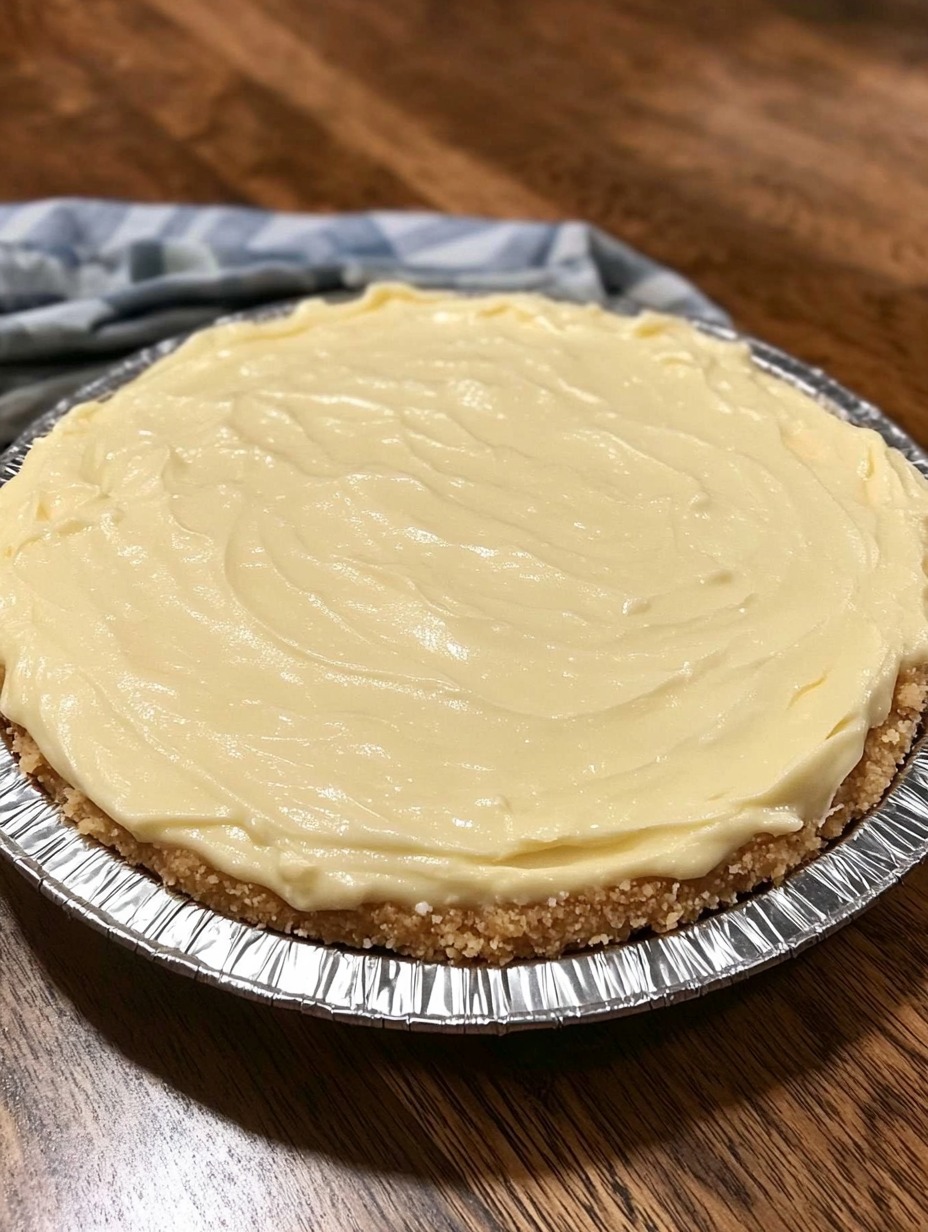 Pin it
Pin it
This zesty sugar-free lemon pie delivers all the bright, tangy flavors you crave without the sugar crash afterward. Perfect for anyone following a keto, paleo, or gluten-free lifestyle, this pie features a crisp coconut flour crust topped with velvety lemon curd and pillowy meringue that will satisfy even your sweetest tooth.
I first created this recipe when my mother was diagnosed with diabetes and was missing her favorite desserts. The look on her face when she tasted this pie and realized she could enjoy lemon meringue again was absolutely priceless.
Ingredients
- Fresh lemon juice: From about 5 small lemons gives this pie its authentic tangy flavor. Always use fresh lemons rather than bottled juice for the brightest taste.
- Granulated sweetener: Like erythritol or monk fruit creates sweetness without the carbs. Choose a high quality option that measures like sugar for best results.
- Eggs and egg yolks: Provide structure and richness to the lemon curd. Room temperature eggs incorporate more easily.
- Unsalted butter or coconut oil: Adds silky texture and richness. Coconut oil creates a dairy free version with subtle tropical notes.
- Coconut flour pie crust base: Offers a nutty complement to the citrus filling while keeping the recipe low carb and gluten free.
- Egg whites: Whip into a cloud-like meringue topping. Fresh eggs at room temperature will whip to greater volume.
Step-by-Step Instructions
- Prepare the crust:
- Make the coconut flour pie crust according to the blog recipe. This forms the perfect crisp foundation for your tangy filling. The slight coconut flavor pairs beautifully with the lemon.
- Create the lemon curd:
- Combine lemon juice, sweetener, eggs, and egg yolks in a saucepan and whisk thoroughly. This creates the base for your curd. Ensure eggs are fully incorporated to prevent lumps.
- Add fat and thicken:
- Introduce melted butter or coconut oil while stirring constantly over medium heat. The continuous stirring is crucial to prevent the eggs from scrambling. Watch for the first bubbles around the edges as the mixture begins to heat.
- Increase heat to thicken:
- Raise to medium high heat while maintaining constant stirring motion. The curd will gradually thicken to coat the back of a spoon. This typically takes about 5 to 7 minutes. You will notice the texture change from watery to custard like.
- Cool the curd:
- Remove from heat once thickened and transfer to a bowl for cooling. Allow it to rest for 15 minutes at room temperature before adding to the crust. This prevents condensation from softening your crust.
- Assemble and chill:
- Pour the cooled lemon curd into your prepared coconut flour crust. Refrigerate for at least 2 hours to allow the filling to set completely. Overnight chilling creates the firmest results.
- Prepare the meringue:
- Whip egg whites in a clean, dry bowl until they begin to foam and increase in volume. Any trace of fat will prevent proper whipping so ensure your equipment is spotlessly clean.
- Add sweetener:
- Gradually add your sugar free sweetener while continuing to beat on high speed. The slow addition ensures proper incorporation and stable meringue structure.
- Check for stiff peaks:
- After about 90 seconds, test the meringue by turning the bowl upside down. If it stays put, your meringue is ready. If not, continue whipping until it reaches the right consistency.
- Top and finish:
- Spread or pipe the meringue onto the chilled pie, creating decorative peaks if desired. Brown the top using a kitchen torch or briefly under the broiler until golden. Watch carefully to prevent burning.
The fresh lemon juice is truly the star of this recipe. I distinctly remember my grandmother teaching me how to select the juiciest lemons by choosing ones that feel heavy for their size and have a slight give when gently squeezed. That simple tip has made all the difference in my citrus desserts over the years.
Storage Tips
The completed pie will keep beautifully in the refrigerator for up to 5 days. Store in an airtight container or cover with plastic wrap to prevent the meringue from absorbing other flavors. The crust may soften slightly over time but will still taste delicious. For best results, add the meringue just before serving if you plan to make the pie base ahead of time.
Ingredient Substitutions
If erythritol causes digestive discomfort for anyone, allulose makes an excellent alternative sweetener with zero glycemic impact. For those avoiding eggs, the lemon curd can be adapted using silken tofu and agar agar, though the texture will be slightly different. The meringue can be replaced with whipped coconut cream for an equally delicious dairy free topping option.
Serving Suggestions
This pie shines when served with a few fresh berries for color contrast and complementary flavor. A small dollop of unsweetened whipped cream adds luxurious richness. For a special occasion, add a sprinkle of lemon zest or a small sprig of mint as garnish. Consider serving slightly chilled rather than cold from the refrigerator to allow the flavors to fully develop.
The Science Behind Sugar Free Baking
Creating sugar free desserts involves understanding how alternative sweeteners behave differently than sugar. Erythritol and monk fruit provide sweetness but lack the moisture retaining properties of sugar. The addition of fats like butter or coconut oil compensates for this by maintaining moisture and creating the silky texture expected in lemon curd. The protein structure in eggs provides the necessary binding in both the curd and meringue without relying on sugar for structure.
Frequently Asked Questions
- → What sweeteners can I use for the lemon curd?
You can use erythritol, monk fruit sugar, or other granulated sugar-free sweeteners like Swerve or Natvia.
- → How do I know when the meringue is ready?
The meringue is ready when it is fluffy, triples in volume, and sticks to the bowl when you turn it upside down.
- → Can I make this pie without meringue?
Yes, you can simply sprinkle unsweetened desiccated coconut or fresh strawberries on top instead of meringue.
- → What can I use instead of the coconut flour crust?
You can use a store-bought gluten-free crust or almond flour-based crust as an alternative.
- → How should I store the pie?
Refrigerate the pie for up to 3 days in an airtight container to maintain freshness.
- → What equipment is necessary to make this pie?
You’ll need a non-stick saucepan, mixing bowls, a set of measuring cups, and an electric beater for best results.
